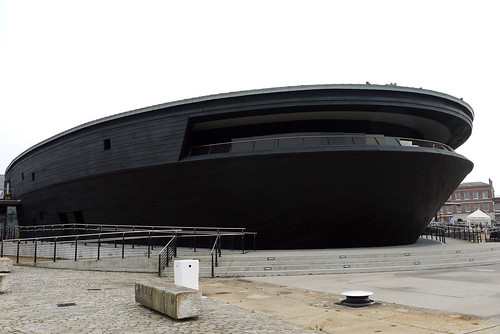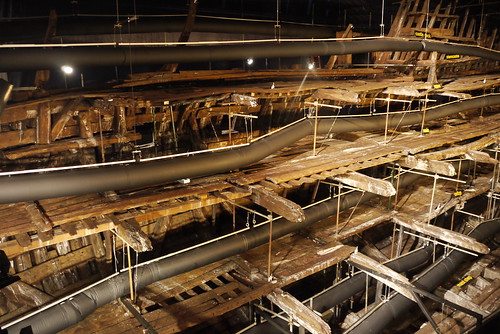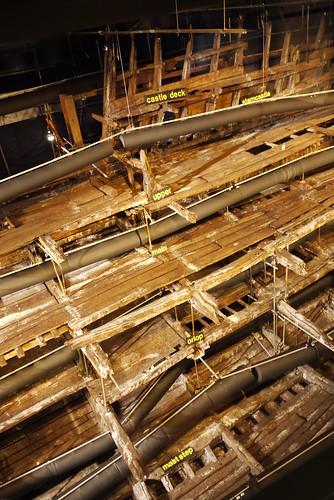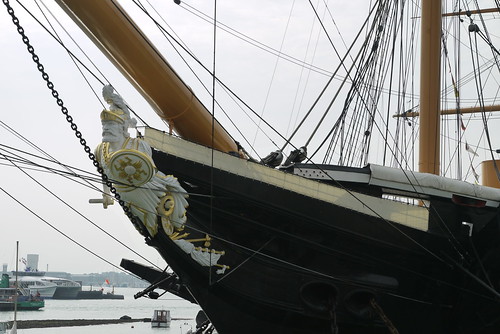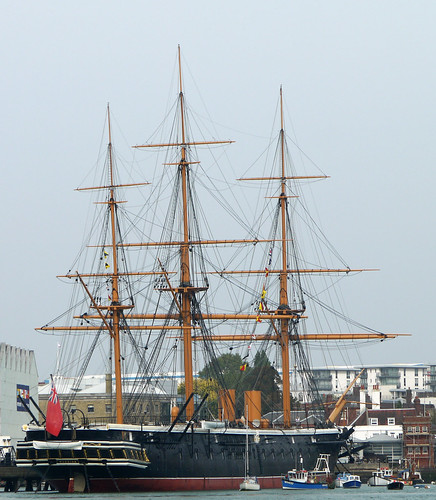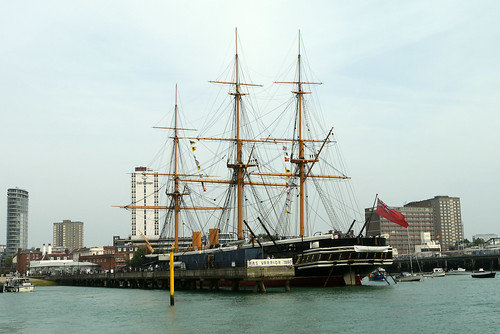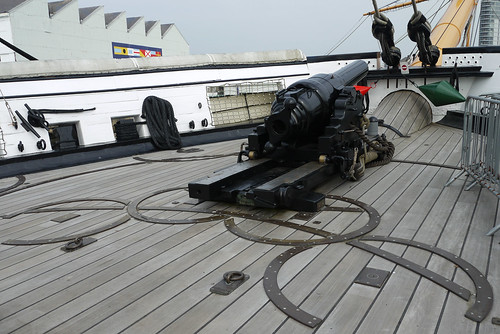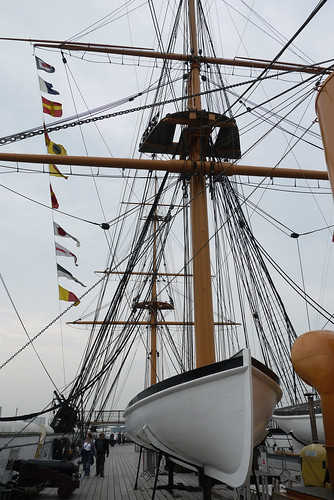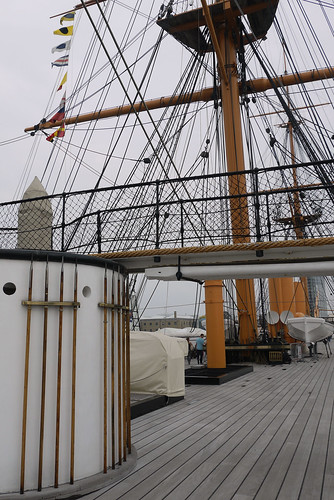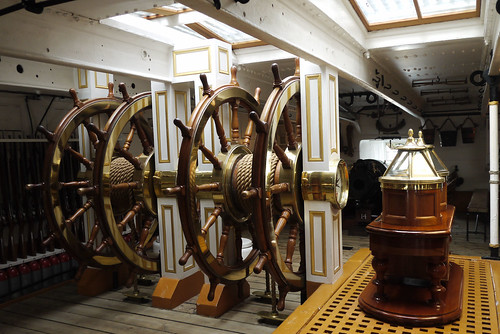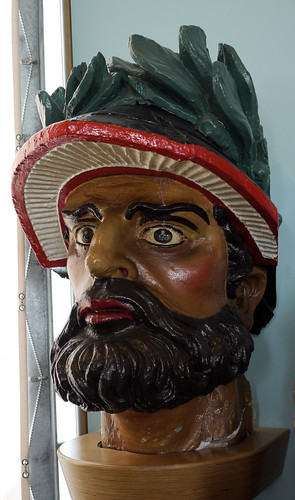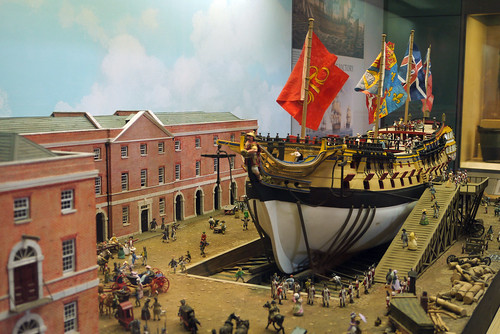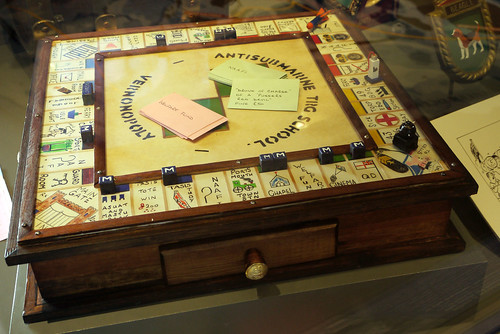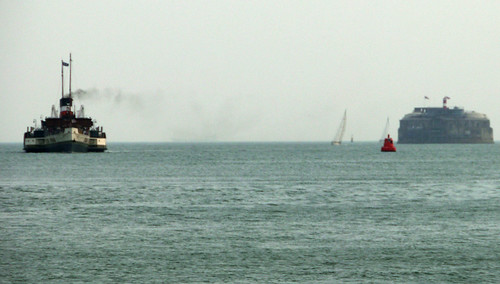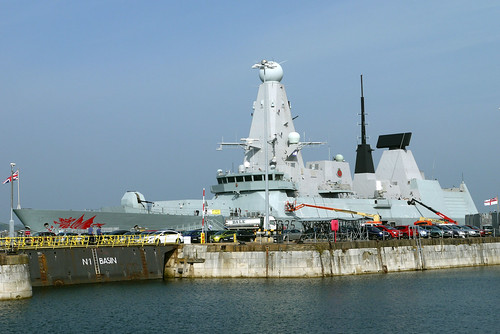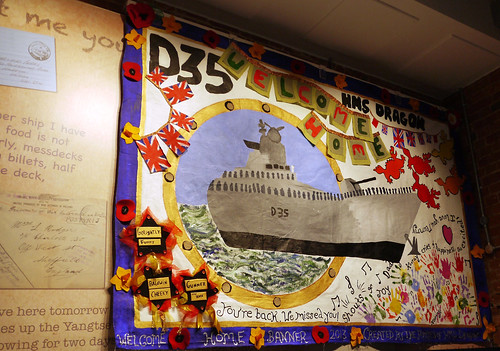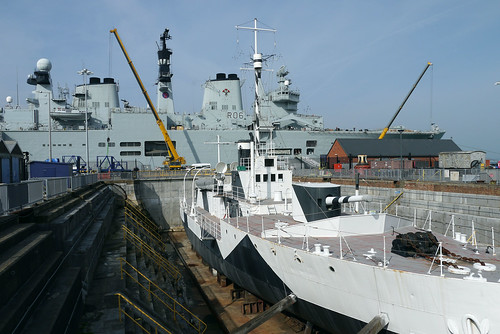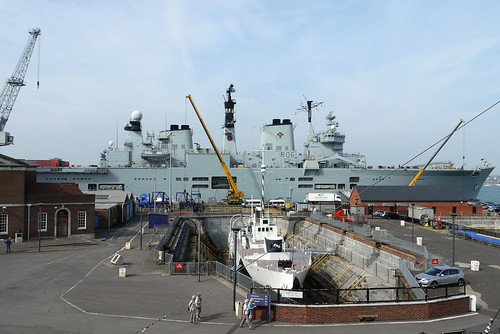In a dry dock behind HMS Victory is the new Mary Rose museum. The building was purpose built to house the remains the flagship of King Henry VIII which capsized and sank in the Solent in 1545. The museum is very well done; the remains of the Mary Rose are on its starboard side and on the port side the artifacts that were found with the ship were displayed laid out as they would have been on the ship. The starboard side was preserved by silt whilst the port-side was exposed and so decayed and was lost.
The Mary Rose is currently behind Perspex because she is being dried out as part of the final stages of the work undertaken to preserve her. It was good for me to have seen Victory first because the layout of the two ships is similar which allowed me to interpret clearly what I was seeing of the Mary Rose.
Mary Rose Revealed
Sometime in the late afternoon of July 19, 1545, the Mary Rose, one of the largest of Henry VIII’s great ships, heeled to the starboard and sank. As the King watched from his encampment on Southsea Common, scarcely a mile distant, he could not have realised what an unparalleled insight into his life and times this catastrophe would ensure. Mary Rose represents both a living community and a state-of-the-art fighting machine, fully manned and equipped for war. A 34-year old veteran, built in Portsmouth, she sank whilst engaging a French invasion fleet larger than the Spanish Armada of 43 years later. To date no marine excavation has attained the scale of the Mary Rose project, nor captured the imagination of the public so completely.
Only rarely in history have so many circumstances combined to preserve a complete community and a moment of such drama. Through this miracle of preservation, her historical treasures provide a unique and vivid impression of life at sea nearly half a millennium ago.
In 1945 Henry VIII watched as his ship sank to the seabed. Just over thirty years ago, His Royal Highness, Prince Charles, President of the Mary Rose Trust, watched as she rose from the seabed. Both have had intimate contact with the ship, King Henry dined with her captain the day before she sank, and Prince Charles dived on the day before she was raised.*
*From the Mary Rose Revealed guidebook

